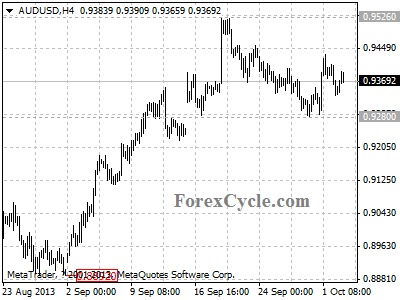London Gold Market Report
from Adrian Ash
BullionVault
Weds 2 Oct 09:45 EST
WEDNESDAY morning in London saw gold recover half of yesterday’s $50 plunge per ounce, rising back above $1300 as world stock markets slipped and the US government shutdown spread to new departments.
Commodities also recovered, and government bonds extended their gains, pushing US interest rates down to 2.62% on 10-year debt.
Euro investors saw gold recover less sharply, as the single currency jumped – and Italian bonds gained – after Rome’s coalition government won a vote of confidence against former prime minister and convicted criminal Silvio Berlusconi.
The European Central Bank today kept its main interest rate at 0.5%.
Rising from near two-month lows today, gold will move to $1405 per ounce by November next year, according to the average forecast from delegates at this week’s London Bullion Market Association conference in Rome, which ended Tuesday.
The best-attended LBMA annual conference to date, its final session saw 4 leading figures from the bullion market agree that $1050 per ounce is a “key level” for gold.
“Technically it’s a good floor,” said Marwan Shakarchi, chairman of refining group MKS Switzerland.
Prices at $1050 are also, he noted, where the Reserve Bank of India bought 200 tonnes of gold from the IMF in late 2009 – a move announced during the LBMA’s conference, then in Edinburgh.
“Believe me,” Shakarchi said, “the RBI technocrats will have analyzed every angle” before deciding to buy gold at that level “as insurance”.
“The RBI didn’t take that decision lightly,” agreed independent analyst Andy Smith. “And they really do know a thing or two about gold.”
“It’s a good call,” agreed Jeremy East of Standard Chartered Bank and Philip Klapwijk, formerly GFMS and now running boutique consultancy Precious Metals Insights. But prices need to reach that level, the panel also agreed, to “clear out weak longs” from gold investments before a new bull phase can begin.
“One reason for pessimism short-term,” said Klapwijk, “is that the surplus [of total supply over jewelry demand] remains high historically. Gold needs to fall further to narrow the gap.”
On his forecast, 2013 will see net gold investment worldwide fall dramatically from 2012 to $40 billion – “close to pre-financial crisis levels.”
Elsewhere today, the shutdown spread across US government departments spread as the $17 trillion debt-ceiling drew nearer.
“There are no other legal and prudent options to extend the nation’s borrowing authority,” said Treasury secretary Jack Lew on Tuesday, again urging lawmakers to end the shutdown and avoid a possible US default on its debt repayments and spending by raising the debt ceiling limit.
Speaking at the LBMA conference’s debate on gold Tuesday, “Detroit is not an outlier,” said Andy Smith.
Defaulting today on $600 million of debt due for repayment, “The city has only half the debt per head of the US national average,” Smith noted, comparing the devalued Dollar to the debasement of ancient Rome’s currency, the Denarius.
“Can you imagine what would happen if the Fed sold what it’s bought?” said Smith, noting the US Federal Reserve’s vote last week not to “taper” its current $85bn of government purchases each month.
As the Fed’s Treasury bond holdings come due, said Smith, “It will be called one arm of government forgiving another. But it will in fact be one giant step close to Weimar [hyperinflation].”
Adrian Ash
BullionVault
Gold price chart, no delay | Buy gold online
Adrian Ash is head of research at BullionVault, the secure, low-cost gold and silver market for private investors online, where you can fully allocated bullion already vaulted in your choice of London, New York, Singapore, Toronto or Zurich for just 0.5% commission.
(c) BullionVault 2013
Please Note: This article is to inform your thinking, not lead it. Only you can decide the best place for your money, and any decision you make will put your money at risk. Information or data included here may have already been overtaken by events – and must be verified elsewhere – should you choose to act on it.



